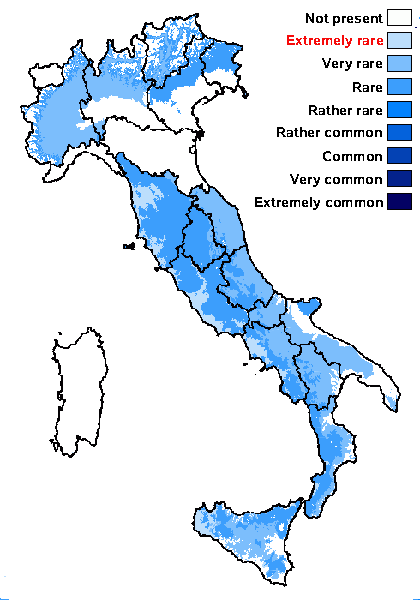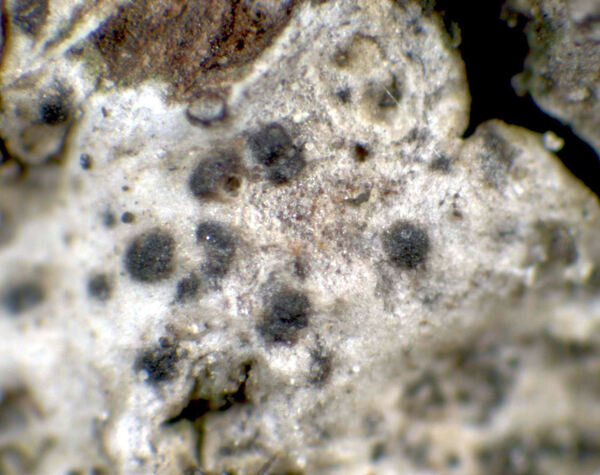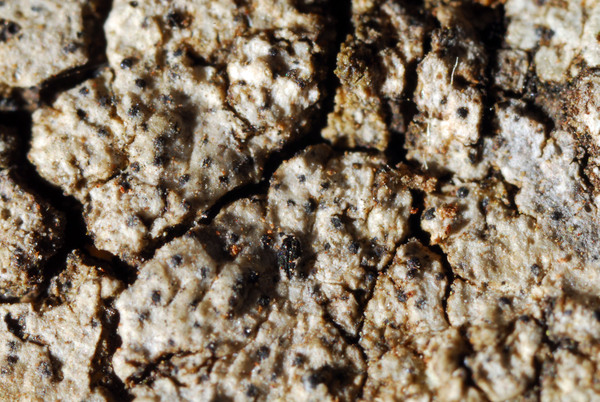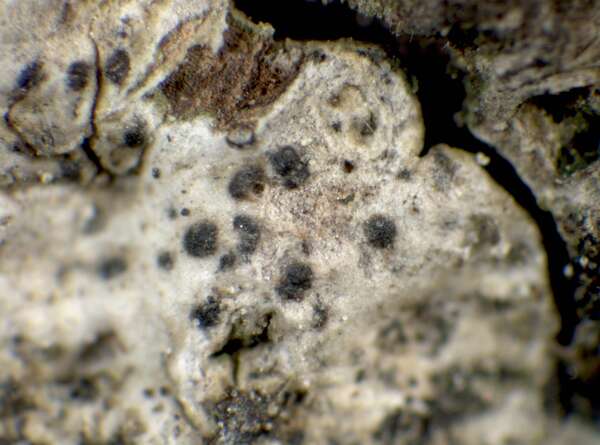Swinscowia affinis (A. Massal.) S.H. Jiang, Lücking & Sérus.
in Hongsanan & al., Fungal Divers.: 10.1007/s13225-020-00462-6, 137, 2020. Basionym: Sagedia affinis A. Massal. - Mem. Lichenogr.: 138, 1853.
Synonyms: Arthopyrenia affinis (A. Massal.) R.C. Harris; Porina affinis (A. Massal.) Zahlbr.; Strigula affinis (A. Massal.) R.C. Harris
Distribution: N - VG, Frl, Ven (Lazzarin 2000b), TAA (Nascimbene & al. 2007b), Lomb, Piem (Isocrono & al. 2004). C - Tosc, Marc (Nimis & Tretiach 1999, Frati & Brunialti 2006), Umb (Genovesi & al. 2002, Ravera & al. 2006), Laz (Fornasier & al. 2005, Ravera 2006, Stofer 2006), Abr (Caporale & al. 2016), Mol (Nimis & Tretiach 1999, Caporale & al. 2008, Caporale & Ravera 2020). S - Camp (Aprile & al. 2003b), Pugl (CLU 16620), Bas (Potenza 2006, Potenza & Fascetti 2012), Cal (Puntillo 1995, 1996, Puntillo & Puntillo 2004, Roux & Sérusiaux 2004), Si (Ravera & al. 2023b).
Description: Thallus crustose, largely endosubstratic, whitish or pale grey, very thin. Perithecia black, 0.3-0.45 μm across, largely immersed, the upper part rounded or flattened. Involucrellum brown, confined to the apical part of the exciple; exciple colourless to brownish; paraphysoids mostly simple, thread-like, c. 1 μm thick, longer than the asci, sparingly branched and anastomosing only where adjacent to exciple. Asci 8-spored, cylindrical (slightly enlarged in the middle), bitunicate-fissitunicate, shortly stalked at base, the apex thickened into a tholus, with a narrow ocular chamber. I-. Ascospores 3-septate, hyaline, not constricted at septa, fusiform, (12-)14-19(-24.5) x (3-)4-6.5 μm, with subequal cells, surrounded by a thin perispore. Pycnidia often of two types. Macropycnidia 0.15-0.2 mm across, largely immersed, with an involucrellum in the upper third; macroconidia 3-septate, subapically inserted on the conidiogenous cell, not or scarcely constricted at septa, cylindrical or subcylindrical, each end with a gelatinous appendage, 13-18(-20) x 2.5-4(-6) μm; micropycnidia similar, but 0.05-0.1 mm across; microconidia shortly cylindrical, 3-4 x 1-1.5 μm. Photobiont trentepohlioid. Spot tests: thallus K-, C-, KC-, P-. Chemistry: thallus without lichen substances.Note: a mainly temperate species found on the smooth bark of deciduous trees, e.g. Fraxinus, Juglans, Tilia.
Growth form: Crustose
Substrata: bark
Photobiont: Trentepohlia
Reproductive strategy: mainly sexual
Commonnes-rarity: (info)
Alpine belt: absent
Subalpine belt: absent
Oromediterranean belt: absent
Montane belt: rare
Submediterranean belt: very rare
Padanian area: absent
Humid submediterranean belt: rare
Humid mediterranean belt: extremely rare
Dry mediterranean belt: absent

Predictive model
Herbarium samples
Growth form: Crustose
Substrata: bark
Photobiont: Trentepohlia
Reproductive strategy: mainly sexual
Commonnes-rarity: (info)
Alpine belt: absent
Subalpine belt: absent
Oromediterranean belt: absent
Montane belt: rare
Submediterranean belt: very rare
Padanian area: absent
Humid submediterranean belt: rare
Humid mediterranean belt: extremely rare
Dry mediterranean belt: absent

Predictive model
| Herbarium samples |
 Index Fungorum
Index Fungorum
 GBIF
GBIF





